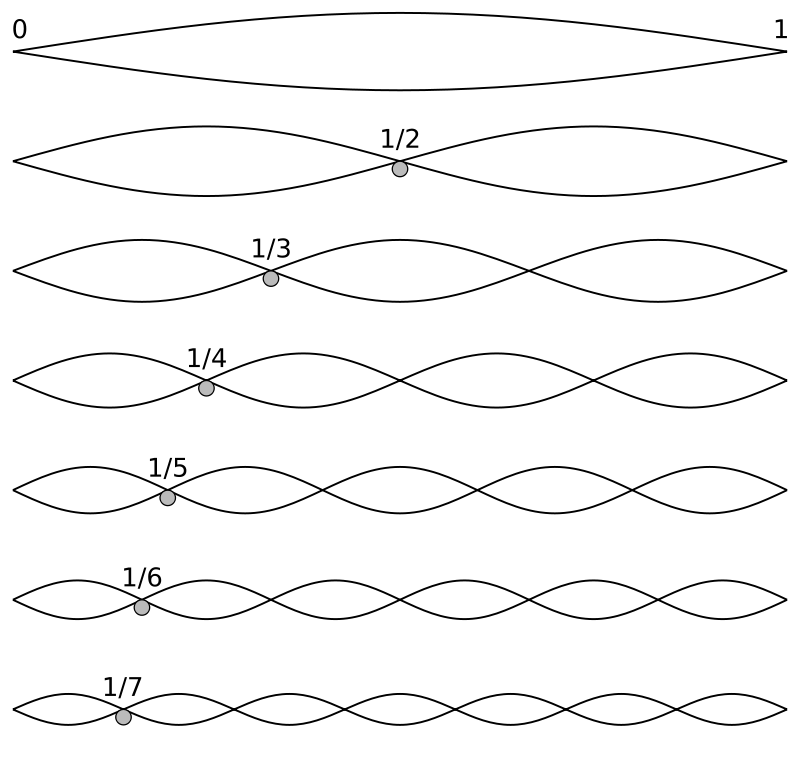Why Do Things Sound Different?
In Wave Basics 2 we covered the four aspects of a wave: amplitude,
period, frequency, and wavelength. However, you may have
realized by now that this can not be all there is to sound: after
all, I've been using audio clips of sine waves and a piano, and
those sound very different from one another, even if they are
playing a note of the same frequency and amplitude, and they would
sound very different to a bell, or a voice, or a horn, etc.
We call the textural nature of sound its timbre, and it is
determined by a wonderful physical phenomenon called the Harmonic
Series (or Overtone Series).
How Objects Actually VibrateTake a look at the vibrating strings in Figure 8: If they are all vibrating the same speed, then the second string will have half the period and thus twice the frequency as the top, the third string thrice the frequency, etc. Now, when a real string is plucked or bowed, which on of these pictures best represents the actual movement? The string actually vibrates in all of these ways, and more (Roederer, p. 98). This is normal - whenever a physical body is set into vibration, it will vibrate down its whole length (like the top string) and half its length at a smaller amplitude and a third of its length at an even smaller amplitude ad infinitum, with each smaller vibration (called an overtone or a harmonic) growing higher in pitch and quieter in volume. Each overtone generates its own sine wave in the air; depending on what exactly is making the sound causes the volumes of these sine waves to be quite different. |
 Fig 8: Different Strings vibrating at the different steps of the harmonic series (Wikimedia Commons) |
What Makes Timbre
So, since each overtone has its own wave, why do we only hear one
sound when an instrument is played? Remember, when is more
than one sound occupying the same amount of air, the waves combine
to from a resultant wave. While our brains can break this
down into different sounds, we don't break every sound all the way
down into its constituent sine waves (you'd need a Fourier
transform to do that). Instead, our brains intuitively
recognize that a collection of sine waves fit the harmonic series,
and lumps them together: we consciously hear the lowest, loudest
overtone, and our brains compares the amplitudes of the other
overtones to determine the timbre of a sound. The reason my
piano doesn't sound like a bassoon is because of differences in
the volumes of the overtones of both instruments (Roederer, p.
99).With speakers and electric currents, we can generate a raw sine wave without any overtones, as I have did in part 2. We can also set all of the overtones to the same volume, creating a sawtooth wave, or only include every odd frequency, creating a square wave (Robehmed). Here's what all three sound like, respectively:
One simplification: a sounds overtone's do not necessarily have to line up in a nice, neat manner. When this happens, our brains won't recognize any particular frequency in the sound, and it will instead sound like white noise (static):